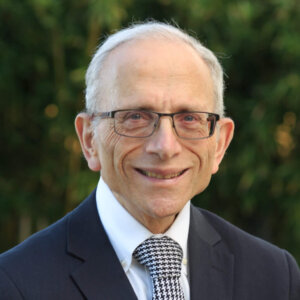Is ‘Open Orthodoxy’ an Oxymoron?

Graphic by Angelie Zaslavsky
This past year saw the inaugural graduation in June of Yeshivat Maharat, the Bronx yeshiva that has been controversially training women to lead Orthodox congregations. Three new maharats emerged from the school this year. Then in the fall came the high profile installation of Rabbi Asher Lopatin as the new president of Yeshivat Chovevei Torah, the yeshiva to which Yeshivat Maharat is attached. This heralded the birth of a new “Open Orthodoxy,” a renewed attempt to wrestle with the realities of the modern world. But there was fierce pushback as well, as the Orthodox establishment sought to define its halachic parameters and rule this new movement out of bounds.
Jonathan Sarna:
The deeper issue underlying the battle concerning “Open Orthodoxy,” is the question of inclusivity versus exclusivity. Orthodoxy’s growth over the past half-century has relied on, like Protestant evangelicalism, an inclusive model. Seeking to compete with liberal Jewish movements, Orthodoxy stretched its big tent to embrace Modern Orthodoxy, Chabad, the “yeshivish” Orthodox and the Hasidic enclaves, like Satmar. Plenty of bickering took place internally, but for the most part Orthodoxy’s major wings learned from the bitter experience of earlier decades that peaceful cooperation would serve all of them better than open warfare would. The calamitous decline suffered by the Conservative movement when the Reconstructionists on the left and the traditionalists on the right angrily abandoned that movement’s big tent served as an object lesson as to why it was so important for inclusivity to be preserved.
Nowadays, though, the Orthodox community feels increasingly secure, enough to be more exclusive. Recent studies, including the New York Jewish Population Survey and the Pew Research Center study, indicate that its numbers and influence are rising. In more right-wing corners of the movement, which are growing the fastest, triumphalism reigns supreme.
—“The Closed Circle of Orthodoxy,” November 15
Gil Student:
A loosely held movement like Orthodoxy is counterintuitively united by denunciations. As we adapt to changing circumstances, as we test new ideas and practices, we sometimes incorrectly misread our co-religionists’ views. Public objections when private conversations fail — sometimes even harsh denunciations — are wake-up calls to change direction for the sake of unity. They are uncomfortable, embarrassing and sometimes ugly, but they work. Many have commented that the messy 18th Century fight between Hasidim and their opponents ended because the Hasidim moderated their excesses in response to opposition. They stopped acting unilaterally and increased the priority of unity.
Despite the strongest objections from mainstream Orthodoxy, “Open Orthodoxy” has chosen to strike out unilaterally in many ways that other rabbis find discomfiting. For members of the movement, principle has clearly trumped unity. These are actions that therefore threaten to splinter the Orthodox movement.

















